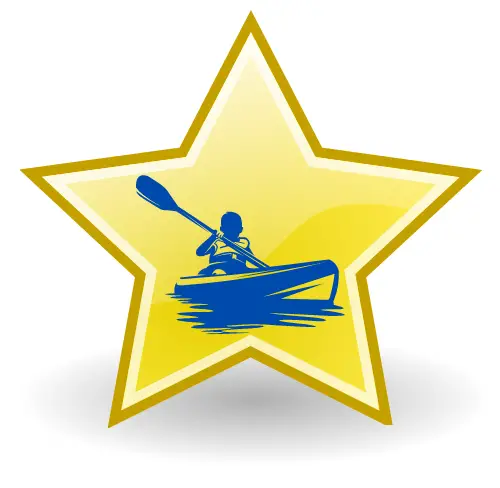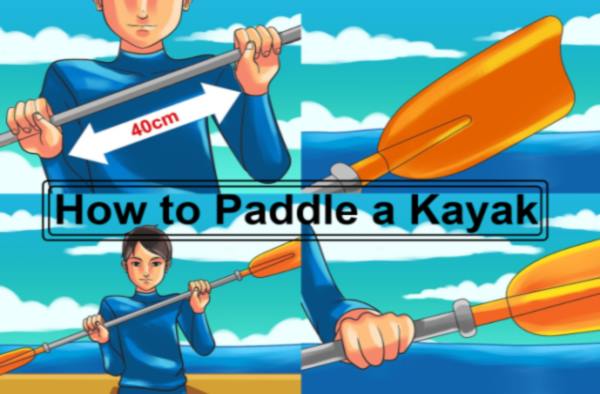Paddling a boat in a kayak is a great way to have fun outdoors. After learning how to paddle a kayak properly, you will experience the freedom and joy of gliding along a lake or through the waves. Kayak paddling techniques are an enjoyable, natural motion that can be improved with practice. When you learn a few tricks and for kayak paddling techniques, your paddle will feel like an extension of the arms and hands.
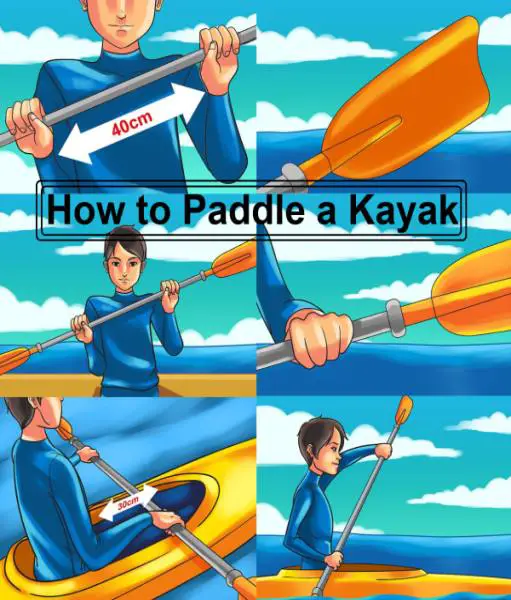
Most people learn to paddle by renting a boat on vacation. This is because they don’t take the technique too seriously. If you can learn the correct paddling techniques, you will have more fun, and you will be able to get out of potentially dangerous situations.
Novice kayakers quickly discover that they cannot move forward unless their kayak paddles blade is in the right place and they jump to the conclusion they’ve mastered forward stroke. Many novice kayakers can even learn how they can back up in the face of a crocodile, water moccasin, or large, loud family of geese. But paddle strokes differ and understanding the fundamentals behind blade orientation, paddling motion, and body positioning will make you a paddling technique ninja in just a few days.
In all water conditions, the basic kayak techniques for paddling remain the same: engage your core, stabilize (abdominal), pull the paddle away at the shoulder, while pulling back towards your body using core, chest, and back muscles. We’ll discuss some maneuvering tips that can be used to make river paddling more comfortable in rapids. For all strokes, you must have a good grip. Your hands should be shoulder-width apart, your knees up and your feet centered. You will have an impact on your speed by choosing the right boat, but also how large and which paddle you buy. Kayak paddles are typically 210, 220, 230, or 240 centimeters long, and the ideal length becomes dependent on where you want to paddle in your kayak, how big you are, and how much of a slant you want to paddle. Your optimal length will depend on your kayak paddle size and your preferred paddling angle.
Table of Contents
Holding on to the Paddle
a) Hold the paddle horizontally with both hands. Keep the paddle in your kayak horizontally. For the event that you drop your paddle, keep both hands on it. Grab the bar with both hands by wrapping your thumbs beneath your 4 fingers.
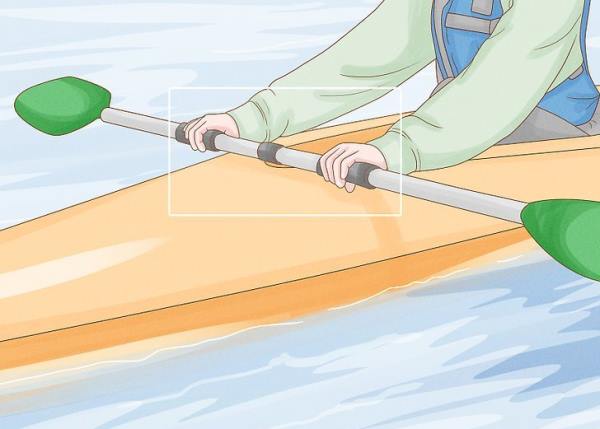
- If the paddle is uncomfortable to hold, it’s not right. The paddle should feel good in your palms.
- To hold the handle, it doesn’t take much effort to squeeze. But don’t loosen your grip so much that your hands slide across the bar.
b) Move your hands slightly beyond your shoulders to hold the paddle. Make small adjustments to your grip so it’s comfortable. For a more comfortable grip, you can make small adjustments.
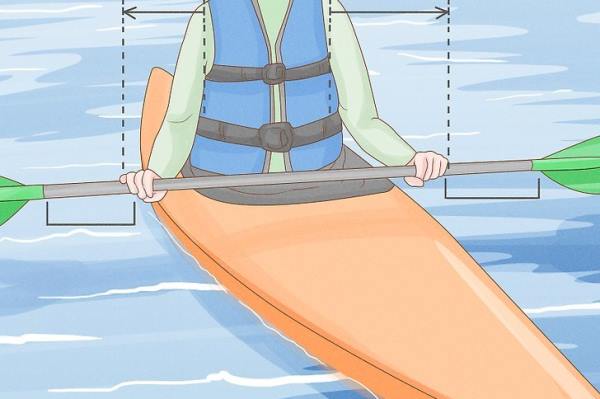
c) Flip the paddle so that the concave, smooth side is facing you. The paddle blades at the end of the kayak paddle are called fins. These paddle blades will not look the same on both sides. You can inspect them to determine which side you have. Place the paddle strokes in your palm so that both concave and smooth sides are facing you.
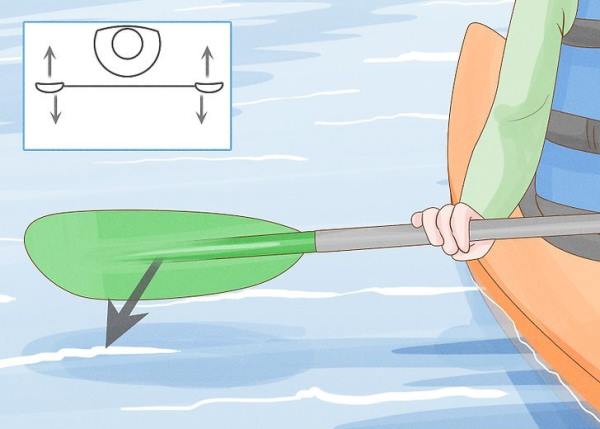
- When paddling, ensure that your blades are perpendicular to the water’s surface.
d) Place the horizontal blades on the top. Take a look at the long sides. The straightest horizontal edges always go on top. If the blade ends at an angle, it always points upwards. If you have upside-down blades, flip the paddle to swap the left and the right sides.
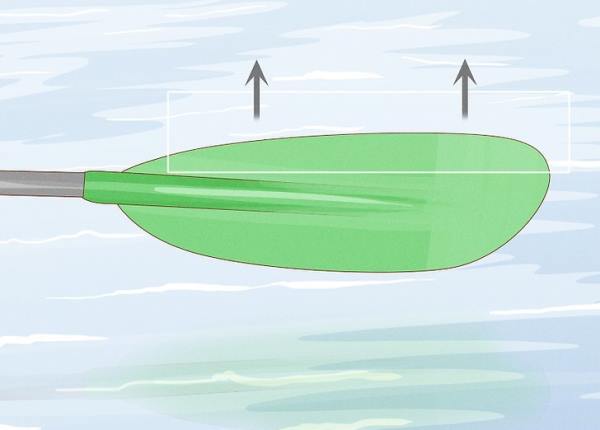
Attention: Make sure you check your blades before going out. If your blades do not align properly, you might lose your balance and sink in the water.
Forward stroke
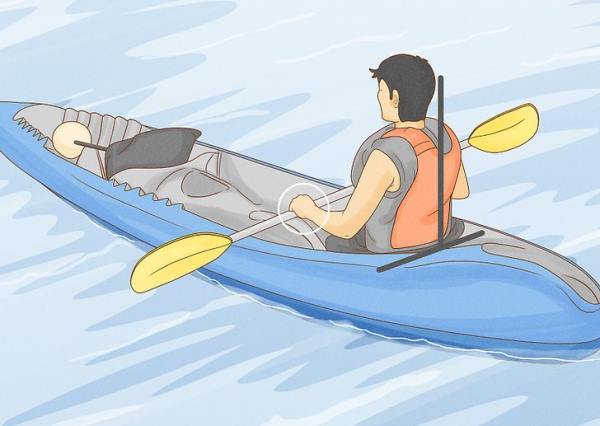
a) Stand straight when paddling your kayak. Keep your core engaged and your core engaged. Lean forward if necessary, but you might lose control of your center shifts.
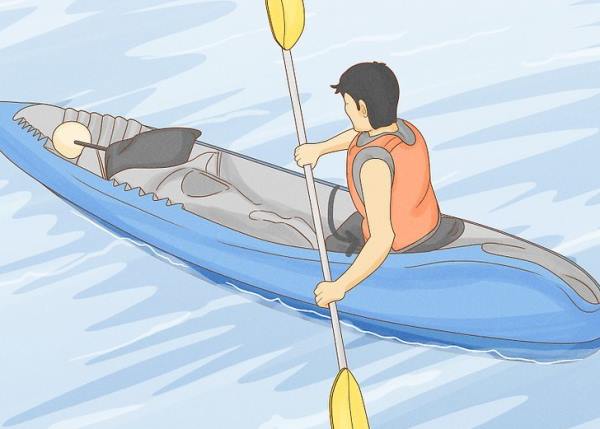
- While you are paddling, ensure your feet rest on the footrests. If you don’t have footrests, your feet should be stretched out in front. If it’s more convenient for you, you may be able to bend your knees a bit.
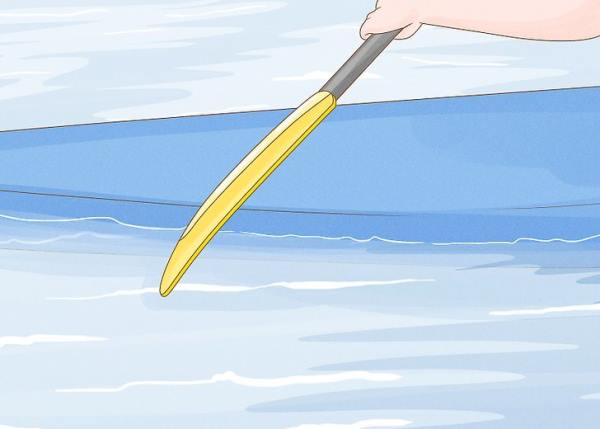
b) Lift your paddle up and twist your trunk. Keep the elbows under your shoulders. To propel yourself forward in any direction, twist your chest slightly in the direction it is most comfortable. If you turn to your left, move your paddle a bit to the side and vice versa.
- Your chest is where the majority of your power comes, and not your arms. It is crucial to keep your upper body straight when you paddle.
Attention: Paddle on the right side. You’ll be turning slightly to your left. If you paddle from the left side, your stroke will be slightly different. If you alternate between paddling to the right or the left, it will push your forward stroke.
c) Position the paddle so that the raised blade is facing forward stroke. When you begin the stroke, tilt your blade down 15–25 degrees. Keep the blade in front of you and lower it towards the surface. The raised blade should move in a semicircle around the water so it reaches the surface of the water and then lowers.
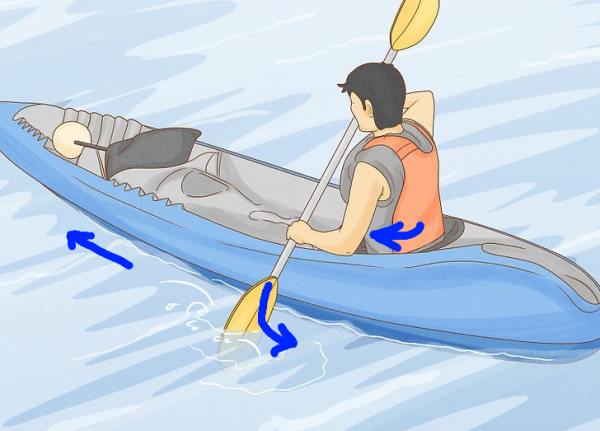
- You can imagine turning two gears and each arm moving in a different direction. The arm that is moving forward will turn at the same moment as your other arm, which lowers behind you.
d) Dip the blade into the water. Lift the blade just under the surface. Pull the blade towards yourself. Keep your back shoulder straight to pull your torso forward. While you do this, lift the blade from the water and move it with a forward stroke.
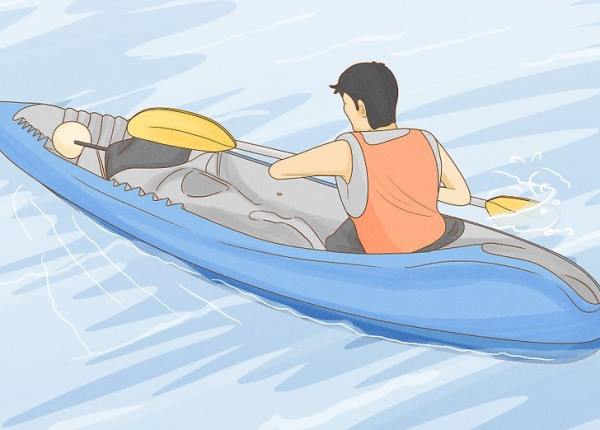
- When you are properly paddling, you will eventually feel your core and chest getting sore.
e) Now, drag the paddle underwater so your shoulder is always in line with the blade. You will then lift the blade out of the water, and the blade will be lowered on the opposite end. To continue paddling forward stroke, push the raised blade into the water.

f) Keep paddling forward and find a rhythm. Watch the kayak shift slightly as you paddle. For your kayak to stay straight, it is important that you find a pattern in which the shifting is equally on both sides. For a smooth and consistent movement, you should use the same strength in each stroke.
Attention: Stay calm if the kayak falls off at any time. Flip the kayak around. Grab the opposite side of your cockpit by reaching over the kayak. Begin to kick and try to get as close as possible to the horizontal surface. You can lift yourself up by kicking hard. Then, reorient yourself to the seat.
Slowing down and turning – good technique
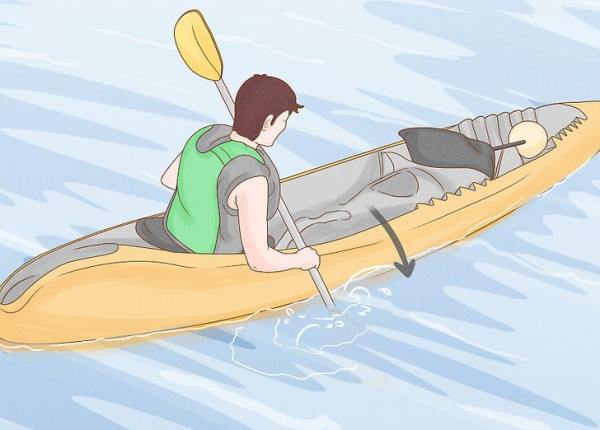
a) Use sweep strokes for pivoting the kayak’s angle. Turn left by extending your right hand out in front and lowering the paddle into the water. Twist your torso leftward and move the paddle backward in an undulating motion. Continue this motion if you need it.
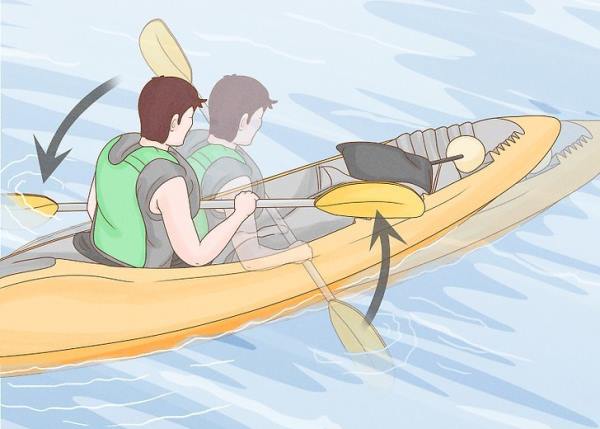
- To compensate for the shifts in your center, your chest should turn in the opposite way that you’re moving paddle.
- While doing this, you should keep your center in balance. Although it is tempting to lean towards a paddle, you might end up in the water.
Attention: You can how to paddle a kayak in the normal way to turn. However, this is not very energy-efficient and difficult. It is easier to just use a couple of sweeping strokes to adjust the angle and keep paddling forward.
b) To break or slow down, paddle in the opposing direction. If you wish to go backward or slow down, paddle in the reverse direction. Your right blade should be underwater. You can slide your left blade forward by sticking it underwater. Then, lower your left edge underwater as you lift the right blade. Slide the left edge forward and continue this motion to slow yourself down as you travel forward or in reverse.
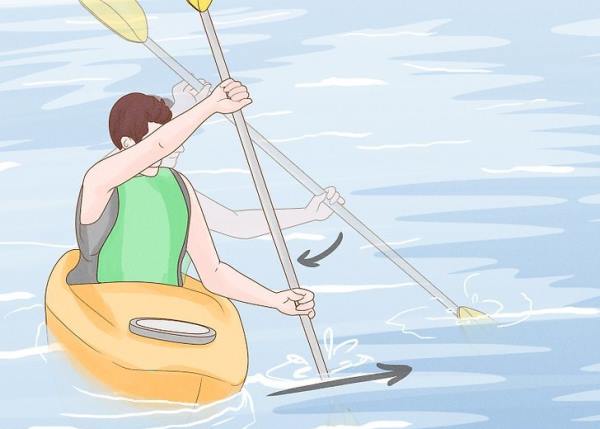
- If you want to slow down, but still turn at the same moment, stick one paddle blade into the water. To turn right, put your right blade underwater. To turn left, stick your left blade underwater.
c) Hold your paddle vertically so you can use draw strokes for sideways movement. For kayaking with friends and other people, you should hold your paddle vertically. Now, you will need to stick the blade underwater with your flat side facing towards you. To push yourself sideways, slowly push the blade away.
- If you find it more comfortable to do so, point the blade at your kayak and pull it in the opposite direction.
Paddling backward: the reverse stroke – proper technique
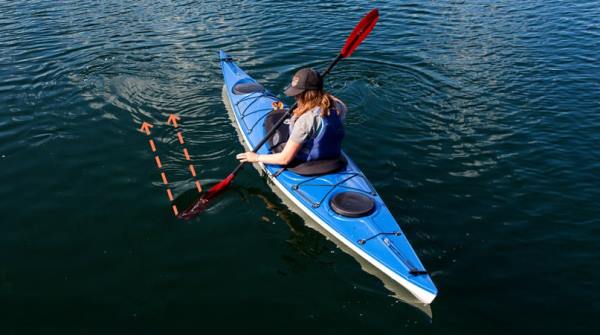
Reverse stroke in a kayak is not the same as going back in a car. Regular paddling backward is an excellent habit to have. It will balance the muscles that can get overused from forwarding paddle paddling.
- Look back before you paddle reverse stroke.
- Keep the paddle blade behind your hip.
- The blade should be angled toward the hip.
- The blade should be removed from the water at your hip.
- Keep reverse stroke going until you reach the destination.
Common mistakes
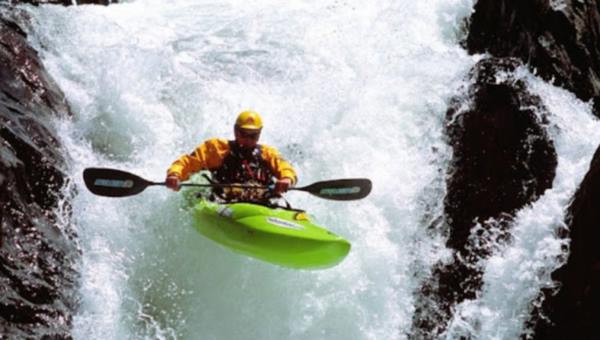
- If you are paddling, it is important to lean back. Leaning back can cause stress to the lower back, disengage the core muscles, decrease stability, and result in a loss of stability. If you’re doing reverse paddling, make sure that your posture is straight.
Be patient. To how to paddle a kayak backward efficiently, you need to put in a lot of practice. You can try shorter strokes, and focus your attention on what’s in front of you to keep you on course.
Capsize prevention & recovery
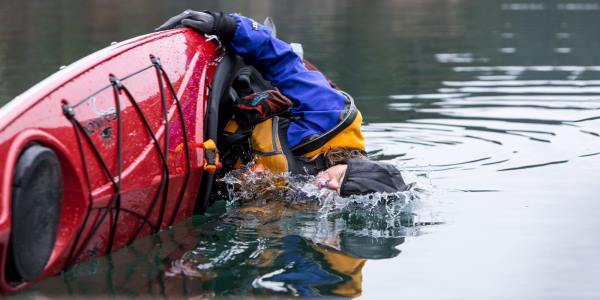
It is possible to avoid many capsizing. However, sometimes capsizes happen. You should keep your kayak within swimming distance of shore if it does not have flotation or bulkheads.
Prevention
You should be aware of your own abilities and the skills of those you are paddling technique alongside. Also, ensure that everyone is using equipment and touring kayaks appropriate for the conditions and paddling skills they have.
Make sure you have a properly fitting life jacket. Wear a suit that is suitable for immersion. Dress accordingly based on the air temperature, water temperature, and forecast for that day.
Capsize – self-rescue
- Grab your kayak paddle.
- Keep Calm
- Flip your kayak upside down to make it upright
- With your kayak, you can swim to shore or wade.
Common mistakes
- Paddle or kayak floats away. You can hold onto your kayak or paddle to keep wind, waves, and current from taking your equipment.
- Jumping in to save a person who has lost his or her footing. Stay calm and in your kayak. Encourage your friend to do the same.
- Difficulty in swimming with your equipment to shore. You should swim with your equipment to shore before an accident occurs.
- A poorly fitted or unclipped/zipped/cinched life jacket can impede swimming. To tighten or adjust your life jacket if it is obstructing your swimming, you can float on your stomach.
- So that you don’t have to hold onto the kayak paddle, try holding them in one hand. If you are swimming with kayaking, you will be most effective using a sidestroke and/or backstroke.
There are several techniques that can help you get back into your kayak when it is in deep water. These techniques can be used if you are planning to how to paddle a kayak offshore.
Safety might seem boring, however, it’s vital kayak tips
You can improve your kayaking skills by learning to paddle. This is code for becoming a safety genius.
Kayak paddling techniques are great for rivers, where the paddle becomes an accessory to help your boat move wherever you desire. Poor paddling techniques can be found on lakes, where many novice kayakers are trying their skills.
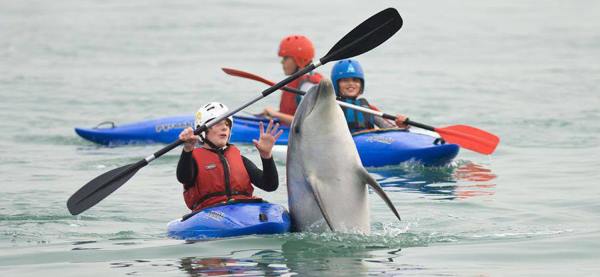
Kayaking is a sport where newcomers can feel safe and secure. The risk of suddenly changing conditions makes any time spent on the waters dangerous.
Being able to paddle effectively will help you avoid any unexpected weather or water changes. As you improve your technique, you’ll be more confident in handling the unexpected. This skill will allow you to be able to help others if needed. You can be certain that at least one person in your group is still learning how to kayak paddle. No matter if you’re kayaking through clear blue skies or in a sudden storm, you will find that your fun factor increases when you can maneuver out of trouble and into a flow.
Our best posts:
